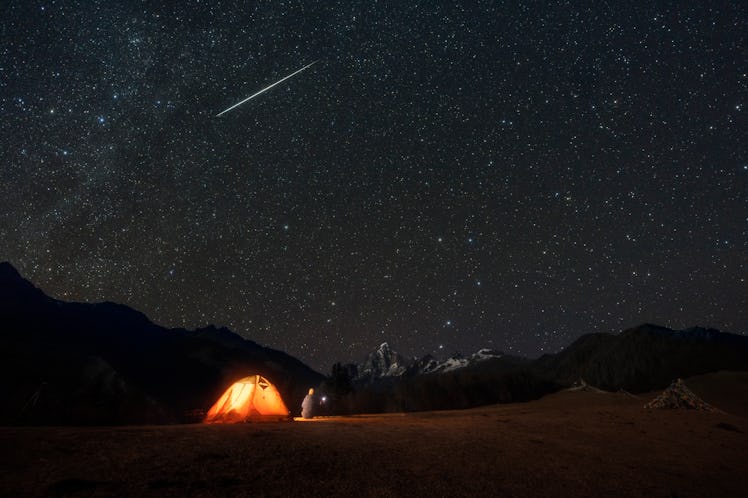The Perseid Meteor Shower Is About To Dazzle The Sky
You don’t want to miss the “best meteor shower of the year.”

There are some events that astronomers always mark off in their calendars, and one of the best sky shows is just a few weeks away. If you’re a fan of fun shooting stars, meteors, or cool things you can see in space, the Perseid meteor shower won’t disappoint. Here’s what you need to know.
What are the Perseid meteor showers?
The Perseid meteor showers are often called “the best meteor shower of the year,” according to NASA. It’s always a good show with very bright and fast meteors shooting through the sky. Per NASA, the meteors have long “wakes” of light behind them, so they’re bright and colorful, making them easier to see in the sky.
In addition, the Perseid meteor shower is very active, so you can expect to see 50 to 100 meteors per hour. The meteors are sometimes referred to as “fireballs,” NASA notes, because they have “larger explosions of light and color that can persist longer than an average meteor streak.”
When can I catch the Perseid meteor showers?
The Perseid meteor shower is technically active between July 14 and Aug. 24; however, the peak viewing dates are Aug. 11, 12, and 13.
The Perseid meteor shower is best watched late at night into the early morning hours. However, “the evening hours are more likely to present an earth grazer: a long, slow, colorful meteor traveling horizontally across the evening sky,” EarthShy suggests.
What’s the best way to see the Perseid meteor showers?
With so many meteors shooting through the sky, catching a glimpse of them isn’t as tricky as other meteor showers throughout the year. The best way to watch the showers is to find a location and angle where there’s a moon shadow.
“Find a moon shadow somewhere that still provides you with a wide expanse of sky for meteor-viewing. A plateau area with high-standing mountains to block out the moon would work just fine. If you can’t do that, find a hedgerow of trees bordering a wide open field somewhere,” EarthSky suggests.
In addition, being far from city lights will also provide you with the best viewing of the incredible meteor shower. Place a blanket on the ground, lay back, and get lost in the stars.
What’s up next? The full Sturgeon supermoon is coming on Aug. 11!
This article was originally published on